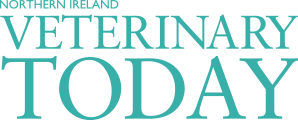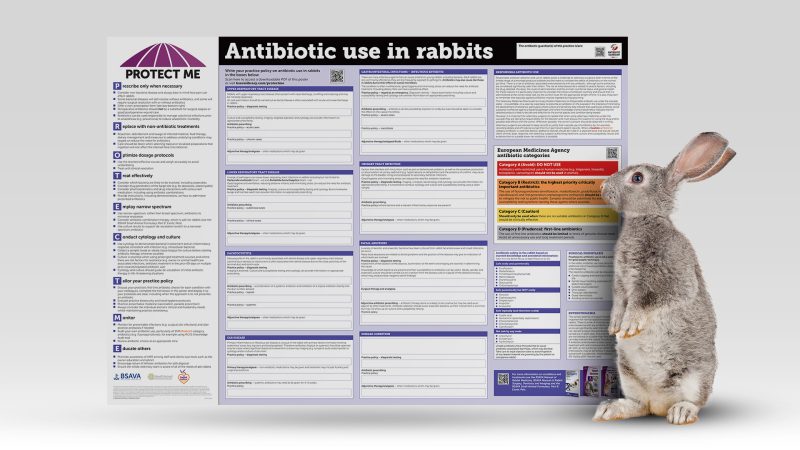The future has six legs, and it’s moving faster than ever
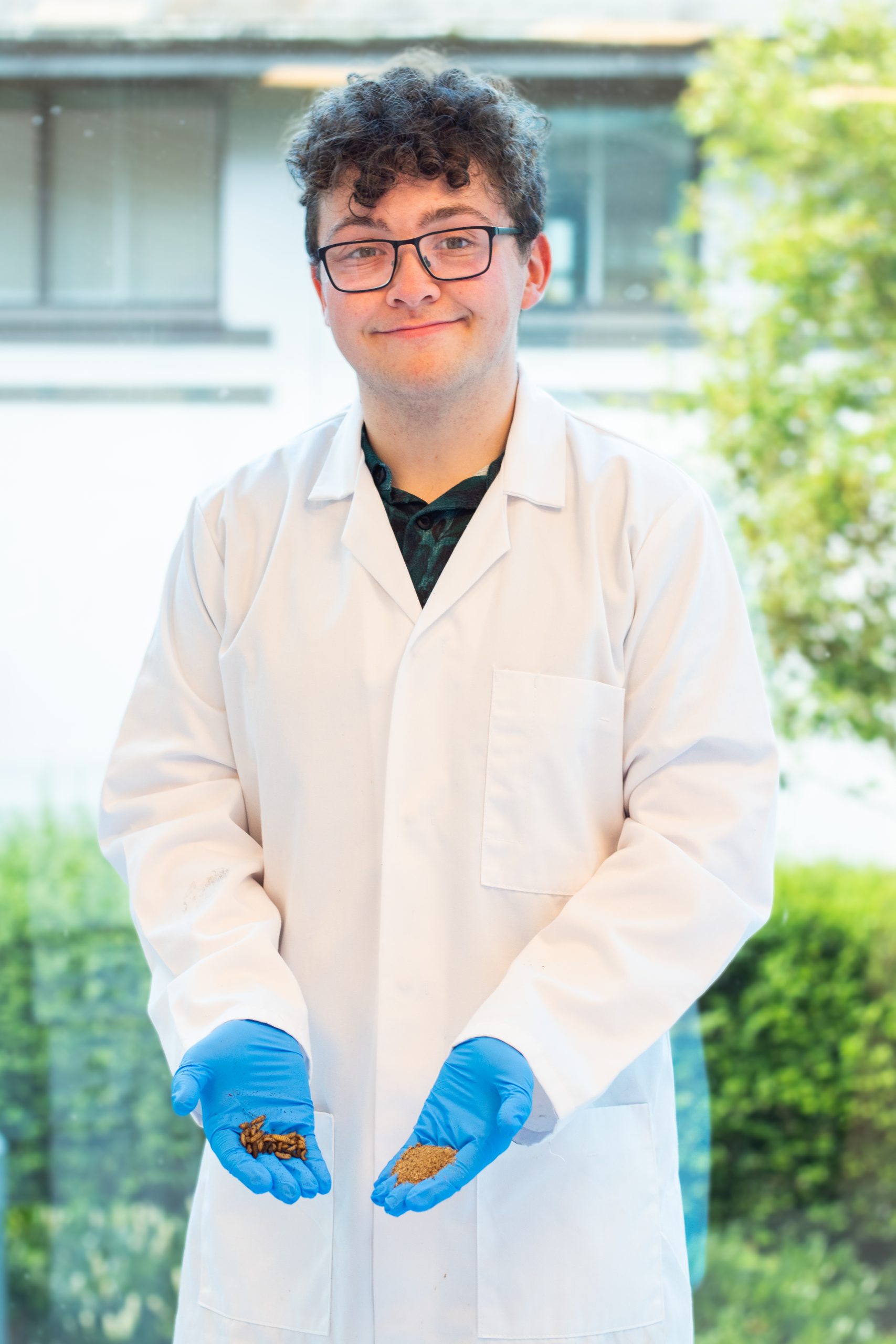
When you hear insects, what comes to mind? For some, insects are unsettling creatures with ‘alien-like’ features; and for others, nostalgia hits as they reminisce on summer afternoons, following a rogue ladybird around their childhood back garden
by Kieran Robertson
When you hear insects, what comes to mind? For some, insects are unsettling creatures with ‘alien-like’ features; and for others, nostalgia hits as they reminisce on summer afternoons, following a rogue ladybird around their childhood back garden. But is it time we start recognising insects as a source of animal nutrition in Northern Ireland?
My name is Kieran David Robertson and I am a PhD student at the School of Biological Sciences at Queen’s University Belfast (QUB), where I am a member of the animal nutrition group led by Dr Katerina Theodoridou, Associate Professor in Farm Animal Nutrition. My project is in collaboration with the University of Reading, supervised also by Professor Sokratis, and funded by the Biotechnology and Biological Sciences Research Council (BBSRC) as part of FoodBioSystems Doctoral Training Partnership: Biological Processes Across the Agri-Food System from Pre-Farm to Post-Fork.
Originally from Manchester, I completed my undergraduate degree in Animal Management while employed as a zookeeper; when it came to feeding livestock, and even my pets, it was clear that the economy hit this multi-billion-dollar industry hard—manufacturers were replacing key ingredients with cheaper alternatives, sacrificing both nutritional quality and sustainability. It is evidently clear that we need an affordable and environmentally friendly alternative protein source. Currently, soybean (Glycine max L.) ingredients are the most common protein source in livestock diets, with some pet food brands utilising soy and soy-based ingredients also. Soybean is a highly nutritious and affordable crop, proving a great candidate for animal diets; however, it comes at a great cost to our planet.
What’s up with soybean?
Sustainability: ‘the quality of causing little or no damage to the environment and therefore able to continue for a long time’ — Cambridge Dictionary.
Due to the unpredictable and cooler climates found in the global north, the majority of soybean is cultivated in the South Americas, where it is then internationally distributed; Northern Ireland alone imports 369,000 tonnes annually to manufacture feedstuffs[1], resulting in a large carbon footprint. Soybean farmland also has disastrous effects on its local environment as its high mineral and water intake often leads to nutrient-deficient soil prone to erosion, leaving behind barren land unsuitable for agricultural or housing developments. Despite unsustainable attributes, 77 % of all cultivated soybean is rendered as animal feed, and with the EU producing less than 20 % of its required protein for livestock, there is a high demand for a sustainable alternative.
The trend of insect-based diets for animals has skyrocketed this past decade: but is it something worthwhile, or just another fad?
Insects are noted for their high nutritional value; published scientific data indicates a protein content greater than 40 %, which is comparable to that of soybean; this protein is highly digestible with a 77–98 % absorption rate[2]. The mineral content of insects tends to be greater than soy, especially in calcium which makes it a great nutritive source for growing, postpartum and lactating pigs, and for laying hens. Insects are also high in non-essential minerals such as strontium which shows evidence of improved bone mass when present in diets[3]: this could be an additional benefit for laying hens which have reduced bone density from egg production[4]. Insects may also prevent ill health in animals as they have been found to reduce the need for antibiotics in livestock production due to naturally occurring antimicrobial and prebiotic activities as result of their lauric acid and chitin content. This however does pose risk of increasing antimicrobial resistance, and this must be explored further.
‘But are insects better for the environment?’, you may ask. Insects show great potential as an alternative protein due to their minimal environmental impact. Firstly, insects require less water than livestock due to their ability to absorb water vapour from the air rectally[5]. Insects also produce minimal gas in comparison to traditional protein sources—per kilogram of mass, beef cattle and pigs produce more methane, nitrogen, ammonia and carbon dioxide, respectively[6].
Insects can convert low-quality feed, like food waste, into valuable biomass which can be rendered as livestock feed. Incorporating insect-based proteins reared on waste substrates into commercial livestock diets offers significant opportunities to enhance sustainability within the agri-food sector.
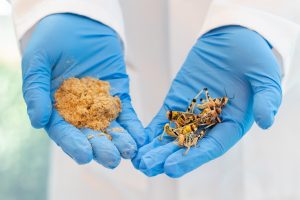
What research are we doing?
Our lab has previously collaborated with the Monogastric Units of The Agri-Food and Biosciences Institute (AFBI) to determine the feeding efficiency and animal performance of pigs and broilers when three different levels of Black Soldier Fly (Hermetia illucens L.) (BSF) meal were used as an alternative protein source[7, 8]. The results of this project indicated that the inclusion of 15 % defatted larva meal as a partial replacement of soymeal revealed no detrimental effect on broilers’ productive performance during the 35-day cycle. On the other hand, the replacement of up to 66 % of the soy meal by partially defatted BSF larva meal revealed no effect on grower-finisher pigs’ productive performance and body composition. Therefore BSF larvae meal can be considered a potential source of sustainable protein in monogastric nutrition.
Despite promising results from animal trials, we still need to explore methods to further improve the nutritive value and digestibility of insects. That’s where my research comes in!
Insects are of potential interest for omnivorous, monogastric livestock as insects can be fed on different organic substrates; their production allows waste or industrial by-products to be reincorporated into the food chain, promoting what is known as a circular economy. My PhD will focus on trialling novel insect-feeding substrates to enhance the chemical composition, growth and performance, and improve digestibility. On the other hand, the insect’s nutritive value depends not only on the insect species and feeding substrate, but also on the processing method and the environmental conditions applied, and within this context, there is a lack of research.
One of the novel aspects of my PhD is that I will explore the relationship between the nutrient-related molecules, and how well they can digest. Through spectrometry, we have determined that insects have highly digestible secondary protein structures which can improve nutritional quality. Recently with my group, we published a scientific article where we explored common insects permitted in legislation; our research showed evidence of high nutritive contents, especially protein, but we also discovered that rearing conditions and substrates heavily influence the molecular structure[9].
Our other research, soon to be published, shows a full biochemical profile of different unexplored insect species with great potential to be used as animal feed in the future. These results are really exciting, because it enables us a greater understanding of insects on a molecular scale, which could help greatly improve sustainability in the animal nutrition industry.
Concluding statement
As we continue to face the challenges of feeding a growing population sustainably, insects offer a promising alternative as a high-protein, and environmentally friendly source of animal nutrition. The outcomes of my project is expected to have a beneficial multi-industrial impact across the agri-food sectors. This project intends to add knowledge and identify the best way to integrate insects into the diets of monogastric animals. Insects are associated with more environmentally friendly and sustainable feeding strategies, and are also aligned with industry goals to maintain good progress on the reduction of antibiotic usage in farming. Hopefully, these results can create a foundation for future studies, legislation, and sustainable strategies.
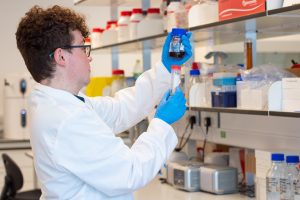
Photography taken by Erin Spence.
References:
- The Department for Agriculture, Environment and Rural Affairs (2021). DAERA Consultation on Proposal to Introduce a Protein Crops Payment Pilot Scheme for 2021.
- de Guevara. O.. Padilla. P.. Garcia. L.. Pino. J. and Ramos-Elorduy. (1995). Amino acid determination in some edible Mexican insects. Amino Acids. 9.161–173.
- Grynpas, M. and Marie, P. (1990) Effects of low doses of strontium on bone quality and quantity in rats. Bone 11(5). 313–319.
- Abraham, M., Robison, C., Kim, W., Regmi, P. and Karcher, D. (2023). N-3 essential fatty acid and vitamin D supplementation improve skeletal health in laying hens. Poultry Science 102(12). 103089.
- Machin, J. (1983). Water vapor absorption in insects. American Journal of Physiology 244(2): R187–192.
- Oonincx, D., van Itterbeeck, J., Heetkamp, M.,, van den Brand, H., van Loon, J. and van Huis, A. (2010). An exploration on greenhouse gas and ammonia production by insect species suitable for animal or human consumption. PLOS ONE 5(12): e14445.
- Ortuño, J., Ball, E., Linton, M., Muns, R., McKillen, J., Gilman, A., Ferguson, D., Corcionivoschi, N., & Theodoridou, K. (2021). Effect of soymeal replacement by Black Soldier Fly (Hermetia illucens) meal in grower-finisher pig diets on productive performance and body composition. Animal-Science Proceedings, 12(1), 33.
- Ortuño, J., Ball, E., Linton, M., Richmond, A., Corcionivoschi, N., & Theodoridou, K. (2021). Effect of soyameal replacement by Black Soldier Fly (Hermetia illucens) meal in broiler diets on productive performance. British Poultry Abstracts, 17(1), 10-11.
- Robertson, K., Ortuño, J., Stratakos, A., Stergiadis, S., & Theodoridou, K. (2024). Attenuated-total-reflection Fourier-transformed spectroscopy as a rapid tool to reveal the molecular structure of insect powders as ingredients for animal feeds. Journal of Insects as Food and Feed https://doi.org/10.1163/23524588-00001092
